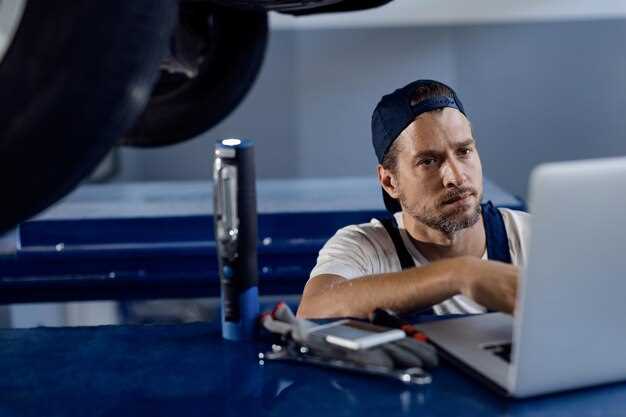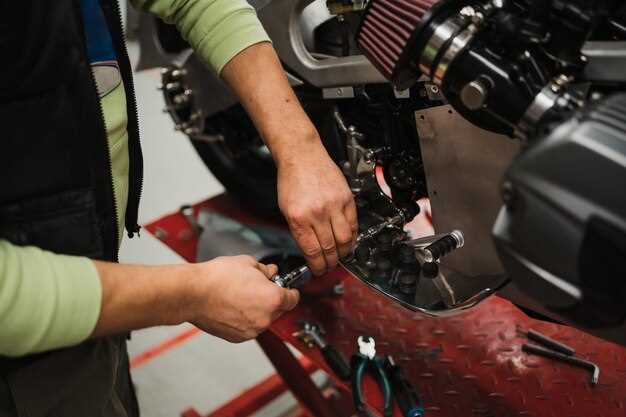
The journey of building or modifying a race car involves numerous critical components, among which wiring stands out as one of the most essential. Proper electronics management not only ensures reliable performance on the track but also directly impacts the overall safety and efficiency of the vehicle. Understanding the intricacies of wiring a race car is crucial for enthusiasts and professionals alike, as it can mean the difference between victory and failure.
From connecting the battery to the ignition system, every wire plays a pivotal role in ensuring that various components work in harmony. This guide will provide you with a comprehensive overview of how to approach wiring a race car effectively, including necessary tools, common pitfalls to avoid, and best practices for ensuring your vehicle’s electrical system is both robust and efficient. With the right knowledge and preparation, you can achieve a clean and reliable wiring setup that stands up to the demands of high-speed racing.
In the following sections, we’ll delve into the specific aspects of wiring, discuss the importance of quality components, and explore how modern electronics can enhance your race car’s performance. Whether you’re a DIY enthusiast or looking to deepen your expertise, this guide will equip you with the foundational knowledge needed to tackle the wiring challenges of a race-ready vehicle with confidence.
Guide to Wiring a Race Car: What You Need to Know

Wiring a race car is an essential aspect of building a high-performance vehicle that is both safe and efficient. Understanding the fundamentals of automotive electronics is crucial for reliability and optimal performance on the track.
Here are the key components and steps to consider when wiring a race car:
- Understand the Electrical System
- Familiarize yourself with the car’s electrical architecture, including the battery, alternator, and ground systems.
- Identify critical components such as the ignition system, fuel pump, lights, and sensors.
- Choose the Right Wiring Harness
- Opt for a lightweight, durable wiring harness specifically designed for racing applications.
- Consider custom harnesses for unique setups to reduce weight and improve reliability.
- Use Quality Connectors
- Select high-performance connectors that can withstand the rigors of racing.
- Ensure all connections are secure to prevent failure during high-stress conditions.
- Install Circuit Protection
- Utilize fuses and circuit breakers to protect the electrical system from shorts and overloads.
- Position them strategically for easy access during maintenance.
- Plan the Wiring Layout
- Map out the wiring path to avoid interference with moving parts and hot surfaces.
- Label all wires for easy troubleshooting and maintenance.
Wiring a race car requires attention to detail and a solid understanding of electronic principles. By following these guidelines, you will ensure a reliable setup that maximizes the performance of your vehicle on the racetrack.
Selecting the Right Wiring Harness for Your Race Car
When building or upgrading a race car, selecting the right wiring harness is crucial for optimal performance and reliability. The wiring harness serves as the backbone for all electronics in the vehicle, linking various components such as the engine management system, sensors, and lighting.
The first step in choosing a wiring harness is to consider the specific requirements of your race car. Different racing categories may have unique regulations regarding the type and quality of wiring allowed. Ensure that the harness you select complies with these rules while meeting your performance expectations.
Next, assess the electrical load that your vehicle will demand. High-performance engines and advanced electronics can require a considerable amount of current. Make sure the harness is designed to handle this load without overheating or causing voltage drops that could affect performance.
Material quality is another critical factor. Look for wiring harnesses made from high-grade materials, typically featuring copper wires with durable insulation. This combination ensures less resistance and increased longevity, which are essential in the high-stress environment of racing.
Customizability is also an important consideration. Some racers opt for a custom wiring harness tailored to their specific needs. This option allows for better organization and potential weight savings by eliminating unnecessary wires and connectors.
Finally, ensure that the wiring harness comes with proper connectors and terminals that are suited for racing. Waterproof and harsh environment-rated connectors will help prevent failures due to vibration and moisture exposure during races.
In summary, selecting the right wiring harness for your race car involves assessing regulatory requirements, electrical loads, material quality, customization options, and connector reliability. Making an informed choice can significantly enhance the performance and safety of your race vehicle.
Understanding Electrical Components: What Every Racer Should Know
In the fast-paced world of racing, a solid grasp of electrical components is essential. These electronics not only power your car but also enhance its performance and reliability on the track. Understanding these components enables racers to make informed decisions, ensuring that every race is executed flawlessly.
At the heart of any race car’s electrical system is the battery. This component stores energy and supplies power to the entire vehicle. High-performance batteries, usually lithium or AGM types, are preferred for their lightweight and high discharge rates. Proper placement and securing of the battery are crucial to avoid damage during high G-force turns.
The wiring harness connects all electrical components, acting as the nervous system of the vehicle. Quality wires and connectors are vital since they must withstand extreme conditions. Utilizing race-specific wiring harnesses ensures that you achieve optimal performance while minimizing the risk of electrical failure. Always opt for components that can handle higher currents and are resistant to heat and vibration.
Another key element is the ignition system. A reliable ignition not only initiates the engine but also affects overall performance and fuel efficiency. Many racers upgrade to high-performance ignition systems to improve engine response and reduce misfires that could cost precious seconds on the track.
Sensors play a critical role in monitoring various parameters such as temperature, pressure, and speed. These electronic devices provide real-time data that can be crucial for making split-second decisions. Integrating advanced telemetry systems allows racers to analyze performance metrics post-race, offering insights into areas that require improvement.
Finally, understanding safety equipment is indispensable. Components like kill switches, circuit breakers, and fire suppression systems are critical for ensuring driver safety. Proper installation and accessibility of these devices can save lives in high-risk situations.
A thorough understanding of these electrical components empowers racers to optimize their vehicles for performance and safety. By investing the time to learn about each part, racers can enhance their chances of success on the racetrack.
Step-by-Step Wiring Techniques for Maximum Performance

Wiring a race car requires precision and attention to detail to ensure optimal performance. Follow these step-by-step techniques to enhance your racing electronics and achieve maximum efficiency.
1. Plan Your Wiring Layout
Before you start, sketch a detailed wiring diagram. Identify all components such as sensors, switches, and the ECU (Engine Control Unit). This step streamlines the process and helps prevent mistakes during installation.
2. Choose Quality Components
Invest in high-grade wiring and connectors specifically designed for high-performance applications. Use wires with appropriate gauge ratings to handle the electrical load and reduce the risk of overheating.
3. Use the Right Tools
Equip yourself with essential tools including wire strippers, crimpers, soldering iron, and heat shrink tubing. These tools facilitate secure connections that are vital for reliability during races.
4. Implement Color Coding
Adopt a color-coding system for your wiring. Consistent colors for power, ground, and signal wires make troubleshooting easier and help maintain organization in your race car’s electronics.
5. Secure and Route Wires Properly
Use zip ties and adhesive clips to secure wires firmly, preventing movement during races. Route wires away from heat sources and moving parts to avoid damage and ensure longevity.
6. Make Connections with Precision
Whether soldering or using crimp connectors, ensure all connections are clean and secure. Poor connections can lead to electrical failures, which could jeopardize race performance.
7. Test Your System
After wiring, conduct thorough tests before hitting the track. Use a multimeter to check for continuity and ensure that all components are functioning correctly. This precaution helps identify potential issues early.
8. Regular Maintenance
Perform regular inspections of your wiring as part of your maintenance routine. Look for signs of wear, corrosion, or damage. Staying proactive can prevent electrical failures during crucial race moments.
By following these wiring techniques, you can create a robust electrical system that maximizes your race car’s performance, ensuring reliability and safety on the track.








